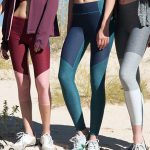While much of its business wasn’t quite humming along in a typically slower period for the company, Decker’s Brands (NYSE:DECK) fiscal 2016 second quarter came in slightly ahead of expectations and management delivered upbeat outlooks for both the holiday selling season as well as for spring.
Net income in the quarter ended Sept. 30 declined 10.7 percent to $36.4 million, or $1.11 a share, exceeding its forecast of $1.05 per share. Revenues rose 1.4 percent to $486.9 million.
With its Ugg brand having a heavy international presence, currency headwinds held back gains. On a currency-neutral basis, EPS increased 21.4 percent to $1.42 a share, on a 5.4 percent increase in sales. The company had expected EPS on a currency-neutral basis of $1.41 with sales expected to rise 5 percent.
“Both our top and bottom line results were in line with our expectations, keeping us on track to achieve our full year guidance,” said Angel Martinez, CEO, on a conference call with analysts.
By brand, Ugg’s sales for the quarter inched up 0.9 percent to $421.1 million and gained 5.3 percent on a currency-neutral basis. An increase in domestic wholesale sales offset a decrease in global direct-to-consumer (DTC) sales primarily driven by a decrease in tourist traffic in the U.S. as a result of the strengthening dollar.
“Our early reads on our casual and weather boots put us in a strong position to drive sales, as we move into holiday and the rest of the fall season,” Martinez said. “Along with pre-booking more non-core product, we also took deeper inventory positions in key weather and casual styles, which will allow for reorders of this product in season.”
Demand for core classics was softer than anticipated due to a “pretty warm September” across most of the United States and the strong dollar leading to a decline in foreign tourists, who often purchase multiple pairs of Uggs on visits.
Hoka One One’s sales jumped 51 percent to $20.4 million, reflecting an expansion of its running offerings, new categories such as hiking, and expanded distribution. Stated Martinez. “Runners of all types are increasingly embracing the brand, thanks to positive word of mouth, and despite a very modest marketing budget compared to our running shoe competitors.”
As an example, he noted that Hoka was the number three most worn shoe at this year's Iron Man World championships, up from six the prior year and ahead of brands such as Brooks and Newton. Martinez also noted that Hoka, as reported, relocated from Richmond, CA to Decker’s corporate headquarters in Goleta, CA to tap additional operational efficiencies and overall “create more synergies and opportunities.”
Combined net sales of the company's Other Brands including Hoka One One, Ahnu and Koolaburra – increased 30.5 percent to $30.6 million.
Teva’s sales fell 13.6 percent to $17.9 million, and dropped 11.8 percent on a currency-neutral basis, as expected. The decrease in sales was largely due to the timing of orders, as more orders shifted to Q1 this year versus last year. The decline reflected lower global wholesale and distributor sales. Strong sell-in was seen in women's and men's boots, which is helping efforts to extend the brand's selling season deeper into the year.
“The brand had particular strength in the women's Delavina boot collection and the newly introduced men's Durban boot,” Martinez said.
Sanuk’s sales decreased 9 percent to $17.3 million. The decline was traced to fulfillment issues as the brand transitioned to Deckers’ Moreno Valley distribution center. A decline in global wholesale sales was partially offset by an increase in global DTC sales.
Companywide, wholesale and distributor sales for the quarter increased 1.2 percent to $400.3 million and advanced 4.9 percent on a currency-neutral basis. An increase in domestic wholesale sales offset declines in international wholesale and distributor sales.
DTC sales nudged up 2.1 percent to $86.6 million while growing 7.5 percent on a currency-neutral basis, led by gains at Hoka, Sanuk, and Teva. DTC’s comps were down 5.2 percent, primarily driven by a decrease in tourist traffic in the United States.
Geographically, domestic sales increased 4.3 percent to $301.6 million. International sales decreased 3.1 percent to $185.3 million but gained 7.1 percent on a currency-neutral basis.
Gross margins dipped to 44 percent from 46.6 percent, primarily driven by an approximately 210 basis point impact from foreign exchange headwinds.
Looking ahead, Decker’s fiscal third quarter sales, ended Dec. 31, are expected to increase 9 percent with an EPS of $5 per share versus $4.50 a year ago. For its fourth quarter ended Mar. 31, revenues are expected to climb 18 percent on a reported basis with EPS reaching 57 cents a share compared with 4 cents a year ago. For the fiscal year ended Mar. 31, sales are expected to rise 8 percent to $1.96 billion. EPS is expected to be $5.18, or an increase of 11.2 percent.















